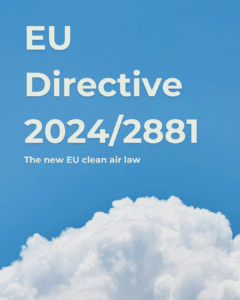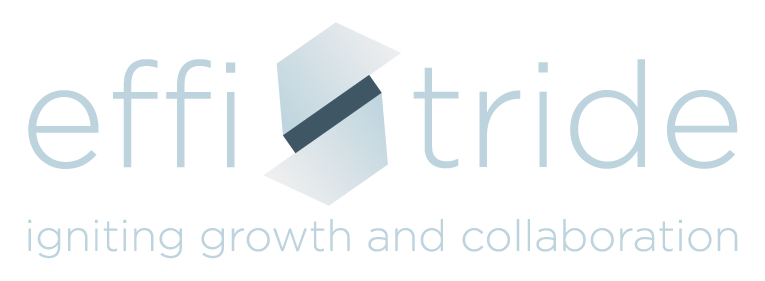Urban transportation is evolving at a breakneck pace, reshaping how people move and interact in cities worldwide. The rapid growth of urban populations has led to unprecedented challenges in mobility, forcing city planners and policymakers to rethink traditional approaches to public transport. As cities strive to become smarter and more sustainable, they’re embracing cutting-edge solutions like electric vehicles and intelligent traffic management systems to tackle congestion, pollution, and accessibility issues.
The future of urban mobility holds exciting possibilities for creating more livable and efficient cities. From the rise of shared mobility services to the integration of autonomous vehicles, innovative transportation solutions are poised to transform urban landscapes. This article delves into the key challenges facing modern cities in terms of transportation, explores groundbreaking solutions being implemented globally, and examines the crucial role of policy and governance in shaping sustainable urban transport systems. By understanding these developments, we can gain valuable insights into the future of city living and mobility.
The Evolution of Urban Mobility
Historical Perspective: Urban mobility has undergone a remarkable transformation over the centuries. In pre-industrial times, cities were compact with mixed-use structures, as movement was primarily restricted to walking. This inefficient and time-consuming mode of transport led to the agglomeration of activity nodes. As transport technology advanced, it brought about significant changes in urban form. The more radical the changes in transport technology, the more substantial the alterations in urban structure.
Current Trends: Today, urban mobility is experiencing rapid evolution, driven by technological advancements and changing societal needs. The rise of shared mobility services and the integration of data-driven technologies are reshaping how people move in cities. In 2020, only about 50% of the urban population had convenient access to public transport1. This has led to an increased focus on developing fast, efficient, and accessible public transportation systems.
The shift towards environmentally friendly alternatives is gaining momentum. Electric and hybrid vehicles, as well as those running on biofuels and hydrogen fuel cells, are becoming more prevalent 2. This transition is crucial to tackle carbon emissions and reduce dependence on imported fossil fuels.
Future Projections: The future of urban mobility looks promising and transformative. Cities are embracing intelligent traffic management systems, utilizing artificial intelligence, machine learning, and the Internet of Things to enable real-time monitoring and analysis of traffic patterns 2. This approach aims to improve safety, minimize gridlock, and shorten intra-city commute times.
The concept of Mobility as a Service (MaaS) is set to revolutionize urban transportation. This model integrates various modes of transport into a seamless, interconnected network, allowing users to plan their entire commute through a single digital gateway 2. By providing multiple options, MaaS has the potential to reduce congestion and enhance the accessibility of transport, making it more sustainable and adaptable to the evolving dynamics of modern cities.
Key Challenges Facing Modern Cities
Population Growth and Urbanization: Cities worldwide are experiencing unprecedented growth, creating significant challenges for urban transportation systems. By 2050, more than two-thirds of the world’s population will live in urban areas, with 43 megacities housing over 10 million inhabitants each by 2030 2. This rapid urbanization is putting immense pressure on existing infrastructure. In Canterbury, New Zealand, for example, the population is expected to grow by around 160,000 people by 2050, with much of this increase concentrated in Greater Christchurch 3. This growth is leading to increased demands on the transport network, potentially resulting in congestion, longer journey times, and reduced safety without proper planning and investment 4.
Climate Change and Sustainability: Urban transportation is a major contributor to climate change, accounting for approximately one-quarter of global CO2 emissions 4. Cities are now facing the challenge of creating sustainable transportation solutions that can mitigate climate change while ensuring the vital flow of people, goods, and services. Public transport plays a crucial role in this effort, as busses and trains can reduce greenhouse gas emissions by up to two-thirds per passenger, per kilometer compared to private vehicles 5. However, to meet climate goals, global public transport capacity must double by 2030 6.
Economic Constraints: Financial challenges pose significant obstacles to improving urban transportation systems. Almost every public transit system struggles to generate sufficient income to cover operating and capital costs, despite significant subsidies and cross-financing 6. This financial burden is becoming increasingly controversial, making it difficult for cities to invest in and maintain efficient and reliable public transportation infrastructure 7. The lack of investment often leads to delays, overcrowding, and unreliable service, discouraging people from using public transit and perpetuating a reliance on private vehicles 8.
Social Equity in Transportation: Ensuring equitable access to transportation is a growing concern in urban areas. As of 2022, just over half of the world’s residents had convenient access to public transport, with only 37% of urban areas being served at all 6. This disparity disproportionately affects vulnerable communities and low-income individuals who cannot afford personal vehicles, potentially limiting their access to job opportunities and essential services 6. Additionally, transportation planning decisions significantly impact people’s quality of life and economic opportunities, making it crucial to consider equity goals in urban mobility strategies 8.
Innovative Transportation Solutions
Shared Mobility Services: Shared mobility services are revolutionizing urban transportation by offering flexible alternatives to traditional public transport. These services, including ride-hailing, car sharing, e-scooters, and shared bikes, are increasingly being adopted by authorities and public transport operators 9. They provide more affordable options than privately owned vehicles and can operate in areas and times less cost-effective for conventional public transport 10. Studies show that 63% of riders combine shared e-scooter trips with public transport, acting as a feeder network for high-capacity transit systems 10.
Hyperloop and High-Speed Rail: Hyperloop, a proposed ultra-high-speed rail system, promises to transform long-distance travel. This innovative technology utilizes electromagnetic attraction forces and low-pressure tubes to achieve theoretical speeds of 1,200 km/h 10. While still in the testing phase, hyperloop has the potential to offer energy-efficient, high-speed transportation between cities. For instance, a proposed route between Los Angeles and San Francisco could potentially reduce travel time to just 30 minutes 11.
Urban Air Mobility: Urban Air Mobility (UAM) is set to transform city transportation through the integration of electric vertical take-off and landing (eVTOL) vehicles. A McKinsey & Company survey found that 35% of U.S. travelers prioritize saving time over anything else when it comes to transportation 12. UAM has the potential to significantly reduce transit times and provide rapid access to critical services, particularly in emergency medical situations 13.
Autonomous Public Transit: Autonomous vehicles are poised to revolutionize public transport systems. In the UK, trials of autonomous busses are underway, such as the CAVForth project in Scotland, which can carry up to 10,000 passengers per week 14. These vehicles operate at SAE Level 4, meaning they have a trained safety driver onboard but are not expected to touch the controls while in autonomous mode 15. The implementation of autonomous public transit could lead to improved safety, efficiency, and the ability to coordinate rerouting in emergencies 15.
Policy and Governance for Sustainable Urban Transport
Effective policies and governance play a crucial role in shaping sustainable urban transport systems. Cities worldwide are embracing innovative approaches to tackle challenges and create more livable urban environments.
Integrated Land Use and Transport Planning: Integrating land use and transport planning has emerged as a key strategy for sustainable urban development. This approach aims to reduce travel distances and encourage the use of alternative modes of transport 16. Cities like Copenhagen have implemented successful models, such as the Finger Plan, which coordinates urban development with infrastructure expansion 17. By linking national urban transport funds to integrated planning, countries like Germany and the US have fostered greater coordination between urban transport and land use planning 17.
Congestion Pricing and Road User Charges: Congestion pricing has proven to be an effective tool in managing urban traffic and reducing emissions. Cities like London, Singapore, and Stockholm have successfully implemented congestion charging systems, resulting in significant reductions in traffic and improved air quality 17. For instance, London saw a 30% reduction in traffic within the first year of implementing its congestion fee 18. These policies not only alleviate congestion but also generate revenue for public transport improvements, creating a more sustainable urban mobility ecosystem.
Public-Private Partnerships: Public-private partnerships (PPPs) have become increasingly popular in financing and managing urban transport projects. In Virginia, PPPs have been used effectively to access innovative finance and prevent cost overruns in highway projects 18. While the evidence for efficiency gains is limited, these partnerships have shown promise in risk reduction and financial arrangements for large-scale transport infrastructure projects.
Citizen Engagement in Transport Planning: Involving citizens in transport planning processes has gained recognition as a vital component of sustainable urban mobility. Participatory approaches build acceptance and improve the efficiency of actions by incorporating end-user needs and perspectives 19. Cities like Prague and Thessaloniki have implemented innovative engagement strategies, such as online tools, surveys, and workshops, to gather citizen input and foster a sense of ownership in transport planning decisions 20. These initiatives not only enhance the quality of planning outcomes but also raise awareness and promote public acceptance of proposed changes.
Conclusion
The evolution of urban transportation is reshaping our cities, addressing key challenges like population growth, climate change, and social equity. Innovative solutions such as shared mobility services, hyperloop technology, and autonomous public transit are paving the way for more efficient and sustainable urban environments. These advancements, coupled with smart policies and governance strategies, have a significant impact on creating livable cities that cater to the needs of their residents while minimizing environmental impact.
As we look to the future, the integration of cutting-edge technologies and citizen-centric planning approaches will play a crucial role in shaping urban mobility. The shift towards more sustainable and accessible transportation systems offers exciting possibilities to improve quality of life and foster economic growth in cities worldwide. To learn more about these groundbreaking developments and join the conversation on urban mobility, we invite you to attend our upcoming Urban Mobility Summit. By working together, we can build cities that are not only smarter and more efficient but also more inclusive and environmentally friendly for generations to come.
FAQs
- How can transportation issues be resolved? Transportation problems can be addressed by considering demand, supply, and transport routes comprehensively. For an effective solution, it’s crucial that the total demand matches the total supply.
- What are the main challenges in transportation systems? Transportation systems face several key challenges including:
- Capacity: There are issues with adequate capacity both on transport routes and at terminals.
- Transfer: The process of transferring between different modes of transport can be problematic.
- Reliability: Consistency and dependability in transport schedules and operations are often lacking.
- Integration: The need for seamless integration between various modes of transportation is a significant challenge.
- What specific transportation issues do urban areas in India face? Urban mobility in India is primarily affected by the rapid increase in vehicle ownership and usage, which leads to severe road congestion, escalating air pollution, a rise in road accidents, and growing concerns about equity and security.
- What problems are associated with modern transportation systems? Modern transportation systems encounter several issues:
- Cost: These systems require substantial financial investment.
- Accidents: There is a high incidence of accidents in modern transportation.
- Inadequate Facilities: The facilities needed to support modern transportation are often insufficient for the demands of its users.
References
- https://futuretransport-news.com/future-gazing-how-urban-mobility-will-evolve-in-the-next-decade/ ↩︎
- https://www.intelligenttransport.com/transport-articles/125982/population-growth-and-public-transport-what-is-the-future-of-ridership/ ↩︎
- https://www.ecan.govt.nz/your-region/living-here/transport/regional-transport-planning/population-growth/ ↩︎
- https://wwf.panda.org/projects/one_planet_cities/sustainable_mobility ↩︎
- https://www.wri.org/insights/current-state-of-public-transport-climate-goals ↩︎
- https://transportgeography.org/contents/chapter8/urban-transport-challenges/ ↩︎
- https://www.roadxs.com/transport/transport-problems/ ↩︎
- https://www.citiesforum.org/news/social-equity-in-transport-planning/ ↩︎
- https://www.uitp.org/news/shared-mobility-solutions-improve-cities/ ↩︎
- https://www.frontiersin.org/journals/sustainable-cities/articles/10.3389/frsc.2022.842245/full ↩︎
- https://en.wikipedia.org/wiki/Hyperloop ↩︎
- https://www.global-aero.com/unlocking-the-potential-of-urban-air-mobility-convenience-comfort-and-cost/ ↩︎
- https://www.easa.europa.eu/en/domains/drones-air-mobility/drones-air-mobility-landscape/IAM-for-City-Transport-Ecosystems ↩︎
- https://www.arup.com/globalassets/downloads/insights/r/research-insights-into-an-autonomous-future.pdf ↩︎
- https://www.digi.com/blog/post/new-public-transit-technology-emerging-tech ↩︎
- https://www.rics.org/news-insights/wbef/integrating-land-use-and-transport-policies ↩︎
- https://climate-xchange.org/2019/05/investigating-the-impact-of-congestion-pricing-around-the-world/ ↩︎
- https://journals.sagepub.com/doi/10.1177/0361198118791629 ↩︎
- https://www.interregeurope.eu/find-policy-solutions/stories/engaging-citizens-in-transport-planning ↩︎


